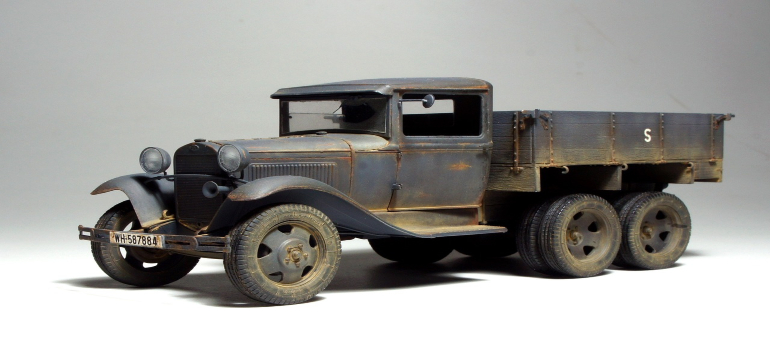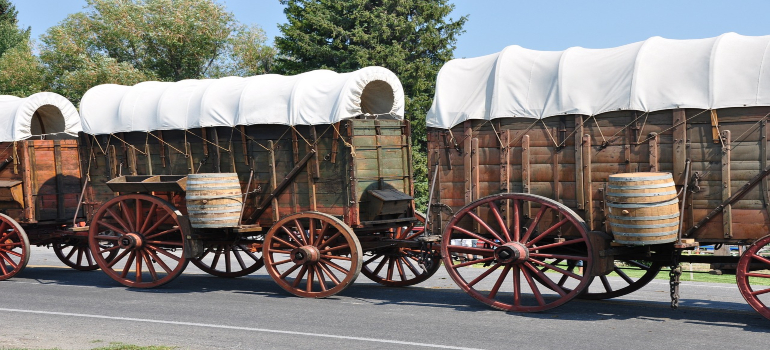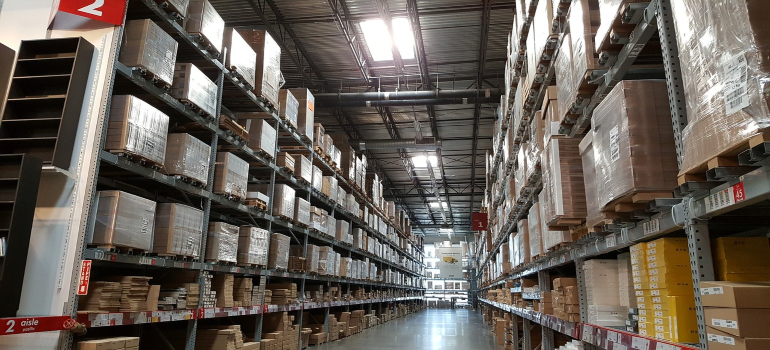The History of Moving and Storage
The historical account of moving and storage is a testament to mankind’s ingenious problem-solving capabilities, evolving socio-economic structures, and the constant pursuit of better living conditions. The inception of moving and storage concepts, in fact, dates back to the dawn of civilization when humans were predominantly nomadic, moving from one location to another in search of food, shelter, and safety. As humanity stepped into settled societies, the moving and storage mechanisms took on new shapes and forms, morphing into more complex systems that significantly influenced economic growth and societal development. From the humble beginnings of sleds and woven baskets to the complex global moving industry and technologically advanced storage systems of today, the changes have been dramatic and transformative. Being an expert team of movers and packers Seattle knows well, we’re happy to guide you through the exciting history of moving and storage!
Early Beginnings: Nomadic Tribes to Settled Civilizations
The genesis of moving and storage systems traces back to the early human cultures, particularly the nomadic tribes who roamed the Earth thousands of years ago. Long before the establishment of the moving services Seattle residents utilize today, ancient civilizations devised their own methods of transportation. They invented simple yet effective moving tools like sleds and skis, innovating from readily available natural resources such as wood and animal bones.
Wrapped in sturdy animal skins or packed in woven baskets, the belongings of these nomadic tribes were kept secure during their long, often arduous, journeys. This method of moving and storing possessions was efficient for their mobile lifestyle. However, it drastically changed when humans transitioned from being hunter-gatherers to settled agricultural societies, marking the dawn of the Neolithic Revolution around 10,000 years ago.

This significant lifestyle change also led to the evolution of storage systems. As humans started cultivating crops and rearing animals, there was a need to store surplus produce for future use. This need gave birth to the construction of early storage structures, such as barns for housing livestock and granaries for storing grain.
The Egyptians, for instance, were famed for their massive granaries, sophisticated structures designed to keep their staple food, grains, safe from pests and spoilage. Meanwhile, the Romans developed vast storage buildings known as ‘horrea.’ These impressive structures stored a variety of goods, ranging from grains to olive oil, demonstrating a marked advancement in storage technology.
Middle Ages: Evolution of Storage and Moving Techniques
The Middle Ages ushered in substantial changes in the realm of moving and storage. With flourishing trade routes, growing commerce, and more complex societal structures, the requirements for moving and storage escalated, and with it, evolved the methods employed. Trade, in particular, had a significant impact on storage systems during this period. As cities developed into trading hubs, the need for storing goods became critical. Thus, warehouses came into being.
These early warehouse buildings provided a secure space for merchants to store their goods while awaiting transport or sale. They marked a significant upgrade from the rudimentary storage systems of the past and became the cornerstone of burgeoning trade networks. Moreover, the Middle Ages witnessed the emergence of specialized moving services, albeit in a rudimentary form.

The nobility and aristocracy, often needing to move their belongings between multiple residences or during their frequent travels, employed servants or laborers for this task. These individuals, although not moving professionals in the modern sense, can be considered the earliest movers, setting a precedent for the specialized moving services we see today.
One of the earliest precursors to modern-day self storage in Seattle can be traced back to the warehouses prevalent in major trading cities worldwide. These cities saw the construction of grand warehouses and storehouses designed to accommodate a multitude of goods. This was an era where the value of goods and the risk associated with their transport was increasingly recognized. Consequently, the design and security of these warehouses became paramount, leading to significant advancements in their construction and management.
The Industrial Revolution: Pivotal Changes
The Industrial Revolution, spanning from the 18th to the 19th century, was a watershed moment in human history. It reshaped virtually every aspect of society, including the moving and storage industry. Technological advancements, particularly in transport, played a significant role in shaping this period of history. Before the advent of industrialization and heavy equipment movers as we know them today, specialists relied heavily on animal power.
However, with the Industrial Revolution came the steam engine, which revolutionized transport, including moving services. Railways sprang up, linking cities and towns, enabling faster and more efficient movement of goods. This had a direct influence on the moving industry, which rapidly transformed from horse-drawn wagons to train-based systems, significantly improving speed and capacity.

In terms of storage, the Industrial Revolution sparked a considerable evolution as well. Prior to this era, storage was largely in the form of warehouses and granaries. However, as industries expanded and the production of goods increased, the demand for more sophisticated storage solutions rose. This period marked the birth of modern storage facilities. Warehouses evolved from simple storage spaces to more specialized structures designed to accommodate different types of goods.
Innovations in construction allowed these buildings to be larger and stronger, capable of storing a wider variety of items for longer durations. The Industrial Revolution also saw the birth of the concept of self-storage, although in a nascent form. As people started to accumulate more possessions, particularly in urban areas, the need for extra storage space became evident. This led to the development of rented storage spaces, the precursors to modern self-storage units.
The 20th Century: Modern Moving and Storage
Entering the 20th century, the world has already witnessed rapid advancements in technology and infrastructure, paving the way for modern moving and storage solutions. However, it was the events of the 20th century, including the World Wars and suburbanization, that significantly reshaped these industries. The two World Wars had a profound impact on the moving industry.
The mobilization of troops and resources on an unprecedented scale required efficient and reliable moving services. Trucks, a relatively new invention, came to the forefront as the preferred mode of transportation, replacing trains and horse-drawn wagons. Their flexibility and adaptability to various terrains made them ideal for moving goods and personnel.

The post-war period saw a surge in the growth and development of the self-storage industry. Economic prosperity and increased consumerism led to people owning more possessions than their homes could accommodate. This created a need for additional storage spaces, catalyzing the expansion of the self-storage industry.
The influence of suburbanization on moving trends was also significant. As people started moving from crowded city centers to suburban homes, the demand for professional moving services escalated. This was a time when moving companies began to proliferate, offering comprehensive services to facilitate the relocation process.
Moreover, the 20th century brought forward the idea of containerization in moving services. Professional international commercial shipping companies started emerging due to this trend. Moving companies started using large containers for transporting household items, providing a safer and more efficient way to move belongings.
History of Moving and Storage in the USA: A Historical Review
The history of moving and storage in the United States is deeply intertwined with the country’s broader historical narrative. During the westward expansion in the 19th century, the moving industry played a pivotal role in the nation’s growth. As pioneers set out to make their homes in the American West, moving services were essential in transporting their belongings across vast distances. Conestoga wagons and prairie schooners, pulled by teams of oxen or mules, were the preferred modes of transportation.
The Great Depression caused a massive economic downturn, leading to a decrease in demand for moving services as people had fewer resources to relocate. However, World War II reversed this trend, as the mobilization of troops and resources led to a surge in demand for moving services. And to become a long-standing moving company and get a chance to thrive, a relocation business had to survive the Great Depression.

The post-war era, marked by economic recovery and growth, saw the rise of moving companies in the United States. As prosperity increased, more Americans had the means and desire to relocate, fueling the demand for moving services. This period also witnessed the introduction of moving vans, replacing the rail and horse-drawn systems, further enhancing the efficiency and effectiveness of moving services.
Simultaneously, the growth of self-storage in the USA took a significant turn. The post-war boom led to an increase in consumer goods, and the growing trend of suburban living necessitated additional storage space. Thus, the self-storage industry emerged and quickly expanded across the country. This industry offered a solution to the increasing need for space, making storage accessible and convenient for the average American household.
Current Trends and Future of Moving and Storage
As we traverse the 21st century, we find ourselves in an era characterized by technological innovation, sustainability concerns, and evolving consumer needs. These factors have shaped the current trends in the moving and storage industry and are poised to drive its future. The integration of technology in moving and storage services has significantly enhanced their efficiency and user-friendliness. GPS technology, for example, has improved route planning and tracking, ensuring more accurate and timely deliveries.
Online booking systems and mobile applications have simplified the process of scheduling and managing moves, offering consumers services, one of which is an online moving estimate. Sustainability has emerged as another key trend, reflecting growing environmental awareness and concern. This has led to the advent of green moving services that prioritize reusable packing materials and eco-friendly vehicles.

Such initiatives reduce the environmental impact of moving and meet the increasing demand for sustainable service options. Looking toward the future, the integration of Internet of Things (IoT) technology is bound to shape the growth and trends in self-storage. IoT-enabled smart storage units could provide improved security, climate control, and inventory management, significantly enhancing the user experience.
Artificial Intelligence (AI) is also set to revolutionize moving logistics. AI can assist with optimal route planning, predictive maintenance of vehicles, and efficient allocation of resources. It can also improve customer service with AI-powered chatbots and automated customer support systems. Another exciting prospect is the potential introduction of self-driving moving trucks. While still in its early stages, this technology could redefine long-distance moving, offering safer and more cost-effective services.
The Future is Bright for Moving and Storage Pros
In retrospect, the history of moving and storage has been a fascinating journey, demonstrating humanity’s capacity for adaptation, innovation, and progress. This industry, though often overlooked, has played a critical role in human civilization, reflecting societal changes and technological advancements over the centuries. The evolution from the early nomadic tribes’ moving techniques to today’s sophisticated moving services signifies a remarkable transformation.
Likewise, the development of storage solutions, from ancient granaries to modern self-storage units, mirrors our ever-evolving needs and lifestyles. Reflecting on the continuous evolution of moving and storage, it’s evident that this industry has always adapted to meet societal needs and will continue to do so in the future. With the integration of technology, the drive towards sustainability, and the advent of new logistical possibilities, the future of the moving and storage industry holds exciting prospects.
Why Choose Us
History
Hansen Bros. Moving & Storage is locally owned and operated by the same family for four generations, since 1890. We have a well-established reputation for service quality and reliability with a high percentage of repeat household and commercial clients.
Professionalism
We’re a certified ProMover by the American Moving and Storage Association with A+ rating with the Better Business Bureau, voted “Best in Western Washington” in 2009 and from 2011 to 2016 by KING5. Our company is fully licensed and insured and member of WMC and AMSA.
Value
Hansen Bros. Moving & Storage provide free, no-obligation in-home estimate and competitive rates, including low minimum rates for shipments moving under 300 miles. We’ve set a refund policy for unused packing materials and three Puget Sound locations to help clients save on travel fee costs.



